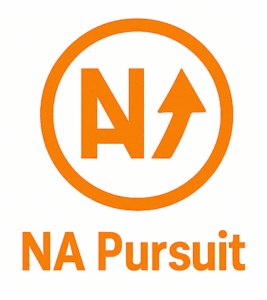Insurance Brokers: Dinosaurs or Disruptors? The Brokerage Revolution
The Changing Face of Personal Lines Brokerage
The personal insurance brokerage industry is at a dangerous inflection point. The industry has been known for traditional, relationship-oriented business models that are undergoing rapid transformations from technological innovations, changing customer demands, and tighter regulatory oversight. However, the legacy systems–wracked by manual processes and fragmented data silos–are increasingly unable to keep pace with the demands for flexibility and efficiency presented by the InsurTech disruptors. In particular, the balance of interest, risk, and mediation is constantly being scrutinized and subjected to the data and pricing pressure, exposing wide variations in broker behavior and client experience. The formula: Policy Volume * Broker Efficiency = Revenue*is becoming more challenging as the ‘efficiency’ factor is transformed through digital capability and process automation creating real-time impacts on brokerage profitability and long term success.
Are Brokers Still Relevant In The 21st Century?
The big question for Personal Insurance Brokers today isn’t if change is coming, it is how they are going to deal with it. The role of the broker, once-a-trusted advisor navigating complex policy language and securing appropriate coverage, is now being directly challenged by digital platforms that promise real-time quotes, artificial intelligence-based risk assessments and simplified claims processes. Then there is the challenge of continued reliance on legacy commission structures, which are widely considered to be opaque and misaligned with client interests. This current system of manual underwriting and risk assessment is further broken down into a visual representation [Diagram: Traditional Broker Workflow vs. Digitally Enhanced Broker Workflow (compare diagram-left-1 traditional workflow vs.diagram-right-1 digital broker workflow)] that showcases an even more depth analysis of how brokers work today compared to digitised solutions presenting the biggest opportunity for improvement and automation. This blog will objectively analyze the condition of the personal lines brokerage; it will break down both the challenges and opportunities presented by this transformative change. We will see if traditional brokerages can pivot into a digitally enabled version of themselves, effectively become ‘disruptors’ in their own right, or risk fading into obsolescence. Familiarity with these dynamics and factors represent a -> not just an academic exercise but the strategic imperative of brokers navigating the complexities of modern insurance distribution.

Personal Insurance Brokerage Market: Overview
Consumer expectations, technology, and macroeconomic factors are reshaping the personal insurance brokerage market. To improve strategic positioning, it is important to understand these dynamics.
A. Positive Trends:
1.Digital Transformation and Improving Customer Experience The uptake of digital technologies, including AI-powered chat application, online quoting platforms and mobile apps would transform the method how the consumer interacts with insurance brokers.
- Underlying Reason: This is due to rising consumer expectations of on-demand services and personalized experiences.
- This minimizes operational expenditure for brokers through automation, improvement in customer engagement, and conducting marketing activities remotely, thus broadening the market reach.
- For example, insurtech Lemonade utilizes AI for claims processing and customer service, providing a user-friendly experience attractive to younger demographics.
- TIPS: Brokers need to have the digital infrastructure to deliver omni-channel access focusing on user interface (UI) and user experience (UX) to maximizing engagement. This involves using data to personalize customer experiences and product suggestions.
2.Data-Driven Product Customization and Risk Assessment: The deluge of data, including telematics and internet of things (IoT) data, enables more subtle risk assessment and the development of custom insurance products.
- Underlying Factor: More data is providing more accurate pricing and coverage in line with individual risk profile
- This is the complete form of coverage which can help in by offering better rates and tailor made coverage.
- One example is Progressive’s Snapshot program, which tracks driving behavior using telematics and offer usage-based insurance after with a discount for safer drivers.
- Brokers can combine forces with insurtech companies to utilize their data analytic capabilities and create products that fit niche markets and have meaningful value propositions based on individual risk profiles.
3.Diversification of Growth – Through Affinity Partnerships: Non-insurance entities (retailers, financial institutions, etc) partnering with a broker to support cross-selling/embedded insurance products is growing broker access to the market.
- Driver: These partnerships offer access to pre-existing customer bases and allow brokers to reach different distribution channels.
- The impact: This is a big thing for brokers since this means a larger base of customers for them and it’s easier for customers to have this kind of customization, because it is that they can buy their products at the same time they buy other services.
- For example, banks and credit unions frequently provide personal insurance by leveraging partnerships with brokerage firms, broadening the base of both organizations.
- Playbook Item: Brokers need to reach out and explore potential strategic partnerships with influential brands in other industries and embed and integrate their offerings into the overall customer journey.
B. Adverse Trends:
1.Heightened Competition from Insurtech Startups: The emergence of insurtech startups, typically operating with nimble structures and cutting-edge technologies, escalates competition.
- Underlying Factor: Any insurance company is also a financial technology company. Insurtech startups develop new technologies to challenge traditional insurers, providing faster, cheaper, and/or better service.
- Impact: This puts downward pressure on brokerage fees and margins, forcing brokers to adjust and innovate to remain competitive position.
- Brokers should leverage our topical analysis and invest in emerging technologies that will help them re-define their own value proposition by providing customer service and specialized product knowledge such that they stand out vs. the purely digital players.
2.Regulatory Uncertainty and Compliance Costs: The rapidly evolving landscape on data privacy, distribution practices, and pricing transparency raise operational costs and compliance risk.
- Underlying Factor: Tight regulatory oversight aimed at protecting consumer interests translates into operational challenges for brokers.
- Impact: This raises brokerage firms’ compliance and administration costs.
- Actionable Insight: Brokers need to build powerful compliance management systems and ensure they are fully aware of regulatory changes and also actively lobby for policies that protect consumers while not stifling industry innovation.
3.Shifting Consumer Behavior and Expectations: Consumers are seeking more transparency, personalized service, and value-driven offerings, disrupting traditional broker-led models.
- Underlying Cause: Consumers have become more digitally savvy, informed, and empowered, with the ability to research and select insurance solutions tailored for their needs.
- Implication: Brokers play a key role in driving customization and transparency when it comes to insurance.
- Step 2: Focus on customer-centricity by investing in effective CRM systems, proactive communication engagement, and user-friendly APIs.
Conclusion:
The personal insurance brokerage market is experiencing a massive shift. To innovate, businesses must be proactive, creative, and nimble. Brokers can ensure that their success is also future proofed by embracing positive trends such as digital transformation and data driven personalization, whilst working to mitigate the impact of negative trends such as increased market competition and regulatory pressures. Adopting a customer-centric approach, investing in technology, and forming strategic partnerships will be essential to stay ahead in this continually evolving market.
Healthcare:
A large hospital system employs a personal insurance broker to navigate the intricacies of its employees benefits program. A broker collects data from multiple organizations, proactively building a multi-layered approach instead of depending on single carrier. A custom mix of group health policies with different providers, for example, is negotiated, as actuarial data analysis is carried out to keep premiums as low as possible while maximizing coverage based on the demographic health risks of staff. Additional coverage is provided to employees, including critical illness or accident insurance, and the broker works with each employee to help them understand what they need in terms of coverage and guidance. This approach lowers overall health care expenditures and reduces risk across their employee population.
Technology:
A software development firm with a mostly millennial workforce is served by a broker with a specialty in niche personal lines of insurance. This is due, in part, to a deep understanding of the unique risks present in the tech world — for example, international health and repatriation policies for digital nomad employees working outside their home country, or specialized products such as cyber liability coverage for working from home setups. The broker also arranges life and disability policies for employees who might be particularly at risk, as determined through analysis of employee attrition rate and leave patterns due to the immense demands of the job. These perks better their talent acquisition and retention strategies.
Automotive:
A broker is used to reduce the risk to a section of employees from certain on-site hazards at an automotive fabrication plant. The broker assembles a tailor-made accident insurance portfolio that features long-term disability and vocational rehabilitation coverage as well as the specific physical requirements of the production line, where the risk of physical injury is higher than others. It is a risk management initiative that goes far beyond standard workmen’s comp, it saves long term claims by smooth early stage interventions with negotiated direct contracts with health providers. This decreases premiums by avoiding long term cases, enabling rapid rehabilitation and return to work.
Manufacturing:
A regular manufacturer of various products, servicing his own hazardous-material facilities, launders personal-line insurance through a brokerage firm. The broker seeks to obtain a portfolio: considered better Hunne to indirect or direct exposure to chemicals or incidents involving machinery heavy with a life insurance policy, health, disability. It is not just about getting insurance — it is about showing that the company is addressing employee safety, which can positively affect the company’s ESG rating and creates trust with stakeholders,” she said. Moreover, to avoid potential lawsuits, it limits the company’s risk exposure and associated legal liability by procuring the necessary coverage in advance.
Organic Growth Strategies
- Hyper-Personalization: Brokers are now using advanced data analytics to have a more detailed approach to meet the unique requirements of each customer. So, rather than providing one-size-fits-all home insurance quotes, brokers sift through variables such as area risk profiles and the age of a homeowner’s roof to recommend custom policy options. This helps increase conversion rates as well as improve customer satisfaction by meeting specific needs.
- ONE-Partner Digital-First Customer Experience: Organizations are investing to create intuitive digital platforms to serve the avatar of the modern customer. These may contain tools for comparing quotes online, chatbots for immediate assistance, and mobile apps for managing policies. For example, some brokers now offer a video consultation feature in their apps, which lets clients discuss complex insurance needs from their own homes.
- Training and Educational Resources for Clients: Brokers are focusing on developing educational resources, which inform clients about various types of insurance and their relevance. For instance, a broker could publish an article that explains the ins and outs of flood insurance, or create a video guide on how to choose the right amount of coverage for your car insurance, asserting themselves as thought leaders.
Inorganic Growth Strategies
- Niche brokers are becoming an attractive target for strategic acquisitions. For example, a national broker may acquire a local broker strong in the needs of high-net-worth clients in order to gain access to a new target segment.
- Collaboration and Partnership: Institutional brokers are partnering with fintech firms to enhance their digital infrastructure. For example, one broker might collaborate with an AI-infused claims administration technology provider to streamline claim processing and enhance payout speed and efficiency. These partnerships help reduce operating costs and strengthen customer experience across the board.
- Strategic Investment in Insurtech Startups: A number of brokers are making calculated investments in ground-breaking insurtech start-ups creating creative solutions for the brokerage house. Such strategy enables the brokerage houses to take the first mover advantage by being the first people to be aware and get direct exposure to such budding technologies and might even integrate such technologies in their stream of work. Example: An example would be investing in a blockchain-based insurance company or startup that uses digital risk assessments.
-

Outlook & Summary: Navigating the Personal Lines Brokerage Transformation
FUTURE TRAJECTORY (5-10 YEARS): The personal lines insurance brokerage space is entering a new phase of rapid evolution much like the rest of the brokerage world. Over time, expect a bifurcation of the market: high-touch, advice driven brokerages with unique risk assessment capabilities (think u = f(α, β, γ) where u is to the client’s specific risk profile, α is demographic information, β historical claim experience and γ environmental factors) plus hands-on service execution will thrive while price elastic transactions will gravitate to the digital sphere. The middle ground will erode. Invest in powerful Customer Relationship Management (CRM) platforms with Policy Administration Systems (PAS) integration (CRM is no longer optional; it is table stakes). This will enable hyper-personalization and predictive modeling toward upsell and cross-sell opportunities. AI and ML will take over mundane tasks and let brokers spend more time on sophisticated risk mitigation and relationship-building with clients. We’re going to see a move towards outcome (rather than transaction) based brokering, with proven value-add (lower total cost of risk, better coverage, pro-active claims support etc.) being the key metric for retention.
What You Need To Know: The personal lines brokerage isn’t going away, but its future is going to depend on adaptation and active disruption. The “dinosaur” way of merely selling policies is untenable. Technology, data-driven insights and a consultative approach will be the guiding forces that will help brokers thrive, not just survive — and become the disruptors. However, those who do will be displaced. The brokerage of the future that thrives will be the hybrid model — the one that uses technology to make processes more efficient, but balances this with the human touch required to understand the nuances of every single client.
In light of this paradigm shift and the importance of rethinking your value proposition, how will your brokerage anticipate and react to this change to remain relevant for years to come?






